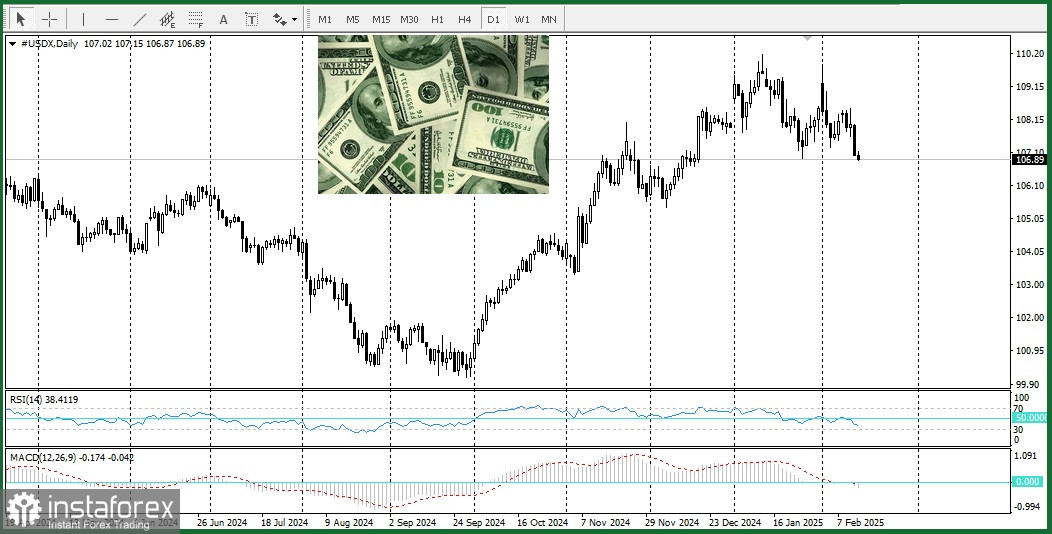
The U.S. Dollar Index (USDX), which tracks the dollar's performance against six major currencies, is showing some stability following recent losses.
This comes amid a decline in U.S. Treasury yields, which adds additional pressure on the dollar, despite ongoing concerns about a potential global trade war. The recent decision by President Donald Trump to delay the implementation of reciprocal tariffs has also influenced the dollar's performance.
Today, traders should focus on the upcoming U.S. retail sales report, which is the last significant economic release of the week. Expectations suggest that retail sales may decline by 0.1% in January, following a 0.4% increase in the previous month.
Inflation remains a central topic, as core Producer Price Index (PPI) inflation in the U.S. rose to 3.6% year-over-year in January, exceeding the expected 3.3%. This further supports the view that the Federal Reserve may delay interest rate cuts until the second half of the year. Persistently high inflation could keep interest rates within the 4.25%-4.50% range for an extended period.
In his recent address to Congress, Fed Chair Jerome Powell emphasized that policymakers should not rush into rate cuts, citing a strong labor market and resilient economic growth. He also warned about the potential consequences of Trump's tariff policies, which could drive up prices and complicate the Fed's ability to lower interest rates.
According to a Reuters survey of economists, many now anticipate that the Fed will postpone rate cuts until the next quarter, due to increasing inflation concerns. Most respondents, surveyed between February 4-10, believe that one rate cut may occur by June, although opinions on the exact timing remain mixed.
From a technical perspective, oscillators on the daily chart have moved into negative territory, reinforcing a bearish outlook for the U.S. dollar in the near term.
Thus, the current situation in the currency market and the U.S. economy requires close monitoring, as multiple factors—including inflation trends, trade policies, and Fed decisions—could have a significant impact on the dollar's future trajectory.
 English
English 
 Русский
Русский Bahasa Indonesia
Bahasa Indonesia Bahasa Malay
Bahasa Malay ไทย
ไทย Español
Español Deutsch
Deutsch Български
Български Français
Français Tiếng Việt
Tiếng Việt 中文
中文 বাংলা
বাংলা हिन्दी
हिन्दी Čeština
Čeština Українська
Українська Română
Română

